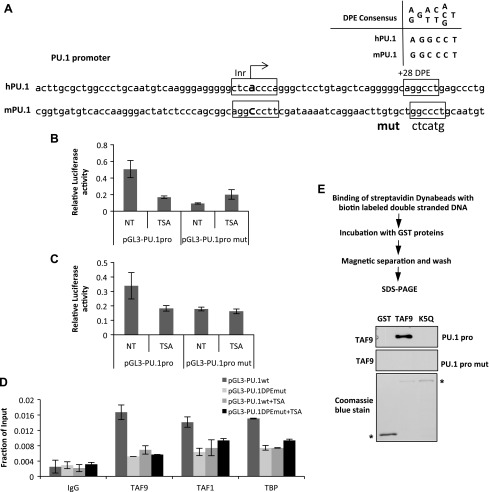Figure 5.
TAF9 acetylation results in the loss of DNA binding and transcription repression. A) Schematic representation of PU.1 core promoter. It consists of a conserved DPE site in both mice and humans. B, C) DPE sequence on pGL3-PU.1pro plasmid was mutated and transfected to K562 cells (B) or RAW 264.7 cells (C). The luciferase activity of cells was determined with or without TSA treatment. D) pGL3-PU.1pro or pGL3-PU.1proDPEmut plasmid was transiently transfected into K562 cells, and ChIP assay was performed with the indicated antibodies. The resulting precipitated DNA was analyzed by using real-time PCR with primers specific for mouse PU.1 promoter and the pGL3 plasmid. E) Schematic representation of biotin-labeled DNA pull-down assay. GST, GST-TAF9, and GST-TAF9K5Q were incubated with biotin-labeled PU.1pro or PU.1pro mut DNA fragment, and the bound proteins were Western blotted with anti-TAF9 Ab. NT, no treatment. Asterisk indicates input GST and GST TAF9 proteins.

